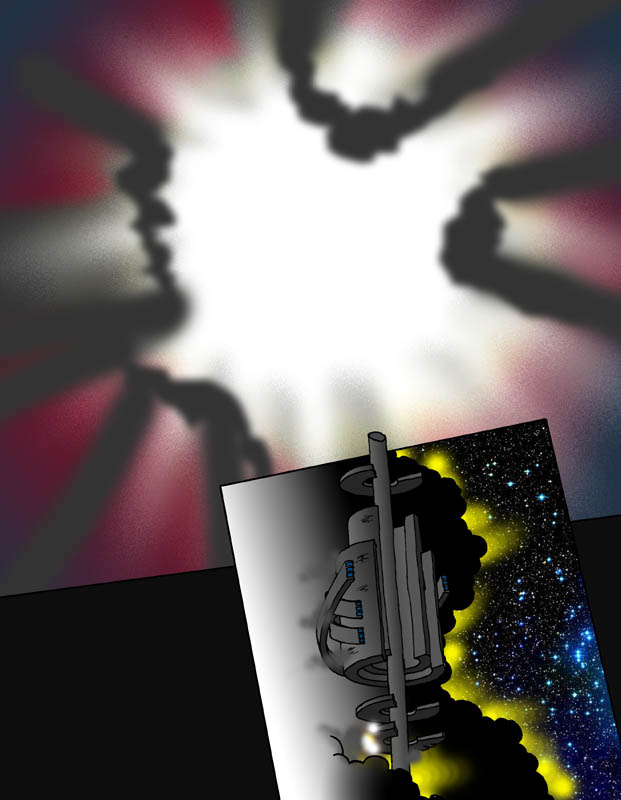
| ||
|
(Jon sez:)  I'm sure you're wondering what the heck a hydrogen flare is. It doesn't
exist, although it is a conglomeration of two things which do exist.
I'm sure you're wondering what the heck a hydrogen flare is. It doesn't
exist, although it is a conglomeration of two things which do exist.
The first of these two conglomerated ideas is the fusion weapon, better known as the H-bomb. In a fusion weapon, isotopes of hydrogen are fused into heavier elements, releasing immense amounts of power in a very short period of time. Current (twenty-first century) fusion weapons consist of a fission explosion (a uranium or plutonium device) which sets a small amount of hydrogen to fusing. There's a lot of science involved, much of it classified, that I don't know and don't want to know. Just keep this concept in mind: we fuse hydrogen to make the bomb go boom. The second idea is the fuel-air explosive. In a fuel-air explosive, a combustible material is released into the air and ignited, resulting in an immense explosion that consumes most of the oxygen in an area. Again, the details are classified and probably would keep me up at night if I knew them. The takeaway idea from here is: we deliver the weapon's fuel into the environment, then set it off, rather than keeping it contained within the bomb. So we now leave classified-top-secret land and move on to pie-in-the-sky science fiction. Imagine, if you will, releasing hydrogen into space and swiftly igniting a fusion reaction in it. If you do it just right, you could make the pressure from "outer shell" of the explosion contain and compress the hydrogen within the "inner core," much like how gravity keeps a star from exploding, thus causing the fusion reaction to continue within the hydrogen for a few microseconds. Big boom. The pits you can see in the sides of the hydrogen flares in the last panel of the previous page are used to disperse the hydrogen into space around the flare's warhead. The hydrogen would be set off with lasers, or perhaps with bolognium*. I'm sure there's something that would make this impossible - the improbability of creating a perfectly spherical dispersion bloom of hydrogen, if nothing else. However, impossibility never stopped me from writing about things in the past. Just look at the orbital cannons. Now, those are impossible, at least for human spaceflight. (For putting satellites into orbit, though, they would probably work.) * bolognium (said "baloney-um"): Pure bullpucky, as applied within a science-fiction story. The USS Enterprise, in Star Trek, appears to be made of 97% bolognium with some chemical impurities and traces of plot. |
(Mark sez:)  I just wanted to say that Martian technology must be pretty amazing, to be able to stand up to the most impressionistic bomb in the Navy's arsenal as well as it did.
I just wanted to say that Martian technology must be pretty amazing, to be able to stand up to the most impressionistic bomb in the Navy's arsenal as well as it did.
Looking back at Pages 7 and 8, which are almost a year old now (MoS's anniversary is June 6th or thereabouts, he casually mentioned) is a pretty startling experience. I guess sometime between then and now Benjamin either stopped or started combing his hair. |
|